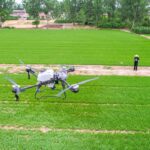Afghanistan is one of the countries rich in natural resources, and its forest wealth is considered one of the nation’s most important assets. Despite being ravaged by years of conflict and violence in many regions, the country still boasts vast forests in various areas. These forests play a critical role in maintaining the ecological balance, air purification, soil preservation, and economic development. Afghanistan’s forests provide essential resources such as timber, grazing areas for livestock, and other natural materials, but they are also crucial for environmental conservation and climate sustainability.
The protection and rehabilitation of Afghanistan’s forests are among the key national priorities that the Afghan caretaker government must focus on. Currently, due to several factors, including the continuation of conflicts and widespread illegal deforestation, some regions have lost their natural forests. This issue not only harms the country’s natural beauty and ecosystem but also negatively affects Afghanistan’s national economy, agriculture, and livestock in those areas.
At present, the need for forest conservation and the creation of new forests in Afghanistan is greater than ever. This is a priority that the Afghan caretaker government should address with special attention by developing a comprehensive and practical strategy. To achieve this, it is essential to prevent illegal logging and deforestation, promote the planting of new forests, and raise public awareness and cooperation. In this regard, the roles of local communities, farmers, and regional authorities must also be strengthened.
Although Afghanistan is a dry and mountainous country in terms of climate and geography, it still has vast resources for reforestation and forest conservation in various regions. Areas such as Paktia, Badghis, Kunar, Nuristan, Khost, and others with extensive forest resources require special attention for protection and rehabilitation. It is vital for the Afghan caretaker government to seek international assistance in this regard to secure the necessary resources and support for forest preservation.
Moreover, raising awareness and building public understanding are equally important. People need to realize that forests are not merely a source of timber but also a significant contributor to the country’s long-term economic, ecological, and environmental development. Therefore, cooperation between the people and the government is crucial, and joint efforts must be made to preserve this vital national asset.
In conclusion, Afghanistan’s forests are one of the country’s national treasures, and protecting and nurturing this asset is a key responsibility of the Afghan caretaker government. Developing a new strategy, increasing public awareness, and preventing illegal logging are actions that need to be implemented immediately to ensure that Afghanistan’s forests, which are vital for both the environment and the economy, are not lost.













